Archaeologists May Have Discovered the Birthplace of King Arthur: Legends Come to Life?
Ancient Origins
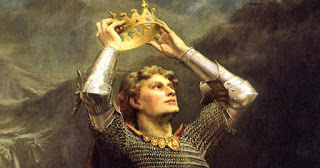
The recent discovery of 1500-year-old ruins at Tintagel in south-west England has made headlines around the world. What appear to the be the walls of a Dark Age palace have been found in the exact place, and dating from the very time, King Arthur is said to have been born.
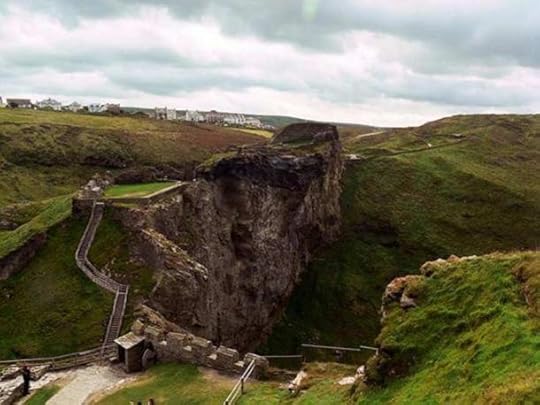 The ruins of the upper mainland courtyards of Tintagel Castle, Cornwall. (
Kerry Garratt/CC BY SA 2.0
)
The ruins of the upper mainland courtyards of Tintagel Castle, Cornwall. (
Kerry Garratt/CC BY SA 2.0
)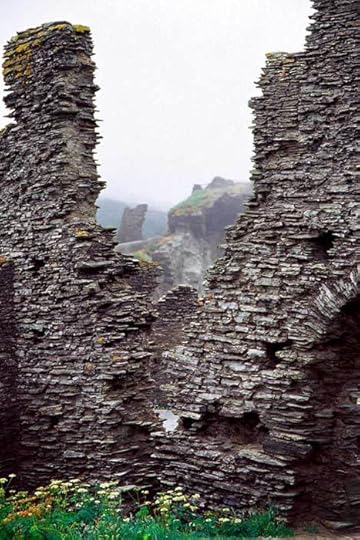 Ruins at Tintagel, England. (
CC BY 2.5
)During the 1130’s the British cleric Geoffrey of Monmouth wrote The History of the Kings of Britain, in which he tells us that Arthur was born in a castle on windswept, coastal cliffs just outside the village of Tintagel in the English county of Cornwall. According to the account, Arthur’s father to be, Uther Pendragon, falls for Igraine, the duchess of Cornwall, and Merlin makes him a magic potion to transform him into the likeness of her husband so the couple can make love in her residence at Tintagel. The plan works but with an unplanned consequence: the baby Arthur is conceived.
Ruins at Tintagel, England. (
CC BY 2.5
)During the 1130’s the British cleric Geoffrey of Monmouth wrote The History of the Kings of Britain, in which he tells us that Arthur was born in a castle on windswept, coastal cliffs just outside the village of Tintagel in the English county of Cornwall. According to the account, Arthur’s father to be, Uther Pendragon, falls for Igraine, the duchess of Cornwall, and Merlin makes him a magic potion to transform him into the likeness of her husband so the couple can make love in her residence at Tintagel. The plan works but with an unplanned consequence: the baby Arthur is conceived.Historical King ArthurAlthough such outlandish tales leave historians skeptical concerning the likely historical existence of King Arthur, there were earlier accounts, such as the History of the Britons by a British monk named Nennius dating from AD 830, that portray Arthur in a more pragmatic and historical context. Arthur was, we are told, a powerful warrior who united the native Britons in their struggle against the invading Anglo-Saxons around the year 500. The Romans had ruled Britain for four centuries, and when they left in the fifth century the country fragmented into separate, feuding kingdoms, allowing the Anglo-Saxons to invade from their homeland in Germany.
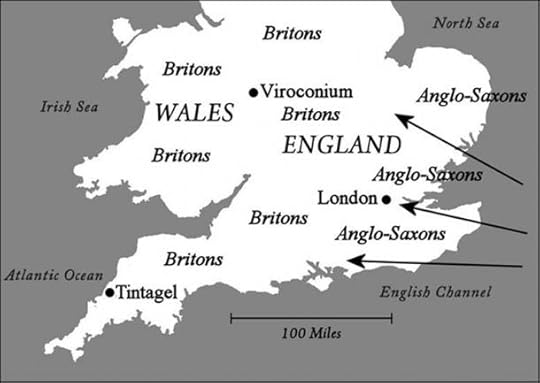 Map:
Southern Britain around AD 500 when King Arthur is said to have lived. (Map by Graham Phillips)From both archaeological discoveries and the few historical records that survive concerning the period, we know that the enemy was initially unstoppable, overrunning half the country. Then, in the 490s, something changed; the Britons mounted a massive counter-offensive and pushed the Anglo-Saxons back to the east. This abrupt change of affairs very much implies the emergence of a powerful, unifying British leader. The problem is that his or her name is not found in any contemporary text or inscription. The turmoil of the post-Roman era resulted in few written records surviving from the period.
Map:
Southern Britain around AD 500 when King Arthur is said to have lived. (Map by Graham Phillips)From both archaeological discoveries and the few historical records that survive concerning the period, we know that the enemy was initially unstoppable, overrunning half the country. Then, in the 490s, something changed; the Britons mounted a massive counter-offensive and pushed the Anglo-Saxons back to the east. This abrupt change of affairs very much implies the emergence of a powerful, unifying British leader. The problem is that his or her name is not found in any contemporary text or inscription. The turmoil of the post-Roman era resulted in few written records surviving from the period.However, someone must have led the Britons at this time, and the oldest extant account to reveal who this was is Nennius’ History of the Britons that tells us it was Arthur. Unfortunately, neither Nennius nor any other early writer reveals anything concerning Arthur’s background or where he was thought to have been born.
Palace at ViroconiumArchaeology has, though, uncovered evidence of a possible capital of Arthur, or at least the person who led the Britons in the late fifth century. Excavations at the old Roman city of Viroconium, near the town of Shrewsbury in central Britain, have unearthed evidence that it was the largest and most heavily defended city in Britain around 500 AD, and at that very time a huge, elaborate mansion was built at its heart. As one of the last classical buildings to be erected in the country for another thousand years, archaeologists believe that it may have been the palace of an extremely influential military figure.
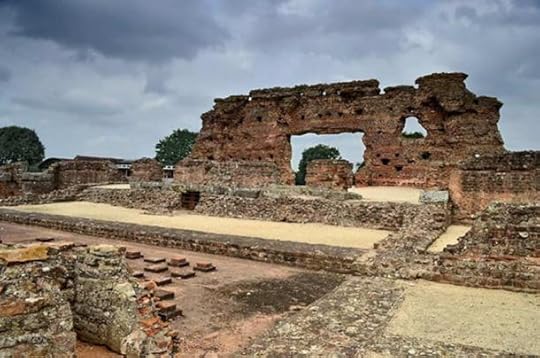 The ruins of Viroconium in central Britain, perhaps the site of the historical Camelot. (Photograph by EarthQuest Photography)Perhaps this was the person who reorganized the British forces to repel the Anglo-Saxons. If this was the Arthur recorded by Nennius, then he was active in many locations. Nennius records twelve of Arthur’s battles, located in various parts of the country, meaning that although he may ultimately have ruled from a city in the center of Britain, Arthur could have been born just about anywhere. So could he have been born at Tintagel?
The ruins of Viroconium in central Britain, perhaps the site of the historical Camelot. (Photograph by EarthQuest Photography)Perhaps this was the person who reorganized the British forces to repel the Anglo-Saxons. If this was the Arthur recorded by Nennius, then he was active in many locations. Nennius records twelve of Arthur’s battles, located in various parts of the country, meaning that although he may ultimately have ruled from a city in the center of Britain, Arthur could have been born just about anywhere. So could he have been born at Tintagel?Fiction from Fact?Although Geoffrey of Monmouth’s account of Arthur’s birth reads like fantasy, it’s possible that it was based on a kernel of truth. The story of Excalibur being thrown to the Lady of the Lake when Arthur lies mortally wounded on the field of battle sounds equally unlikely. Nevertheless, archeology has uncovered many weapons, including swords that had been cast into sacred pools and lakes by the ancient Britons as offerings to a water goddess. Perhaps Arthur’s sword really was thrown into a lake in the hope that such a deity would heal him.
The Bewitching Tale of Morgan le Fay, a Captivating Character of Arthurian Legend The Legend of the Fisher King and Elements of the Divine Fishermen in Ancient Mythology Meet Magnus Maximus, the Roman Usurper-Turned-Welsh Hero Who Inspired King Arthur A similar embellishment may account for the story of Arthur’s conception. Royal advisors, such as Merlin is said to have been, did exist during the fifth century. They were known as bards: part poets, part shamans who were accredited with knowledge of medicinal plants. These included hallucinogens such as the famous “magic mushroom.” Perhaps it was Igraine who was given a potion to make her believe that Uther was her husband. Yet even if the legend of Arthur’s conception was based loosely on some kind of genuine event, the location of Arthur’s supposed conception has long been in question.
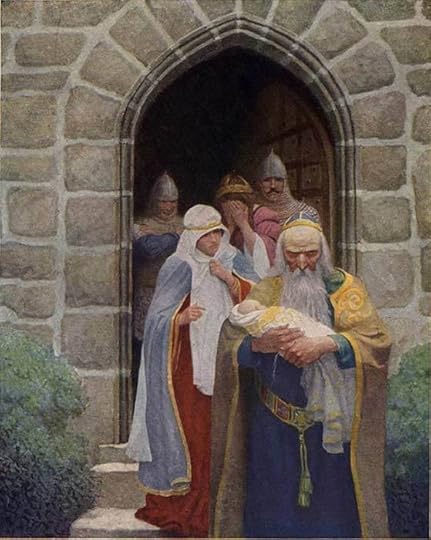 Illustration: Merlin taking away the infant Arthur - "So the child was delivered unto Merlin, and so he bore it forth."(
Public Domain
)Although works such as that by Nennius do suggest that there was an historical figure behind the legend of King Arthur, Geoffrey has Arthur’s nativity occurring in a castle that stood in Tintagel during his day; A structure that historical records reveal was only built in the early twelfth century, 600 years too late to have been the birthplace of a king who was said to have lived around AD 500.
Illustration: Merlin taking away the infant Arthur - "So the child was delivered unto Merlin, and so he bore it forth."(
Public Domain
)Although works such as that by Nennius do suggest that there was an historical figure behind the legend of King Arthur, Geoffrey has Arthur’s nativity occurring in a castle that stood in Tintagel during his day; A structure that historical records reveal was only built in the early twelfth century, 600 years too late to have been the birthplace of a king who was said to have lived around AD 500. The remains of Tintagel Castle in Cornwall, the legendary place of King Arthur’s birth. (Photograph by EarthQuest Photography)The craggy, grey stone ruins that can be seen on the cliffs of Tintagel today are the remains of a castle built in the thirteenth century, replacing the one that stood there in Geoffrey’s time. But even this structure had not been erected until the early 1100s. However, the archaeological excavations being conducted at present are unearthing what appear to have been the foundations of a much older building that previously occupied the site. Judging by the high-status artifacts so far unearthed, such as exquisite pottery, ceramics, and glass, it is thought to have been the residence of a wealthy and important individual who lived at the very time Arthur is said to have lived—perhaps the historical Arthur’s mother. The fabled king could indeed—just possibly—have been born at Tintagel after all. If this is where Arthur had his origins, then perhaps the excavations, still ongoing, might finally uncover something bearing his name: the ultimate proof that King Arthur really did exist.
The remains of Tintagel Castle in Cornwall, the legendary place of King Arthur’s birth. (Photograph by EarthQuest Photography)The craggy, grey stone ruins that can be seen on the cliffs of Tintagel today are the remains of a castle built in the thirteenth century, replacing the one that stood there in Geoffrey’s time. But even this structure had not been erected until the early 1100s. However, the archaeological excavations being conducted at present are unearthing what appear to have been the foundations of a much older building that previously occupied the site. Judging by the high-status artifacts so far unearthed, such as exquisite pottery, ceramics, and glass, it is thought to have been the residence of a wealthy and important individual who lived at the very time Arthur is said to have lived—perhaps the historical Arthur’s mother. The fabled king could indeed—just possibly—have been born at Tintagel after all. If this is where Arthur had his origins, then perhaps the excavations, still ongoing, might finally uncover something bearing his name: the ultimate proof that King Arthur really did exist.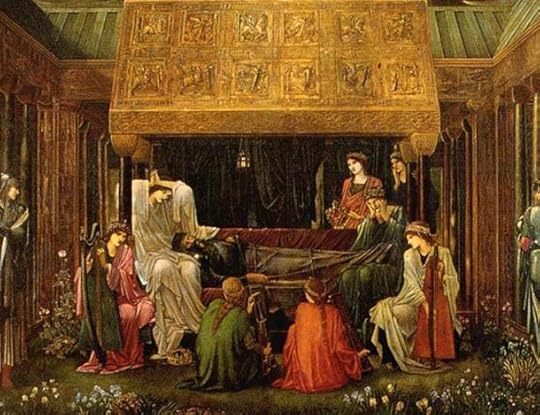 The Last Sleep of Arthur in Avalon. (
Public Domain
)Graham Phillips is author of
The Lost Tomb of King Arthur
, published by Inner Traditions.
The Last Sleep of Arthur in Avalon. (
Public Domain
)Graham Phillips is author of
The Lost Tomb of King Arthur
, published by Inner Traditions.--
Top Image: King Arthur. Detail. Charles Ernest Butler, 1903. ( Public Domain )
By Graham Phillips
ReferencesJason Daley, August 5 2016. “Archaeologists at Tintagel uncover walls and artifacts from a Dark Ages complex likely used by local kings.” Smithsonianmag.com [Online] Available at: http://www.smithsonianmag.com/smart-news/palace-unearthed-king-arthurs-birthplace-180960035/?no-ist
Published on August 17, 2016 03:00
No comments have been added yet.



